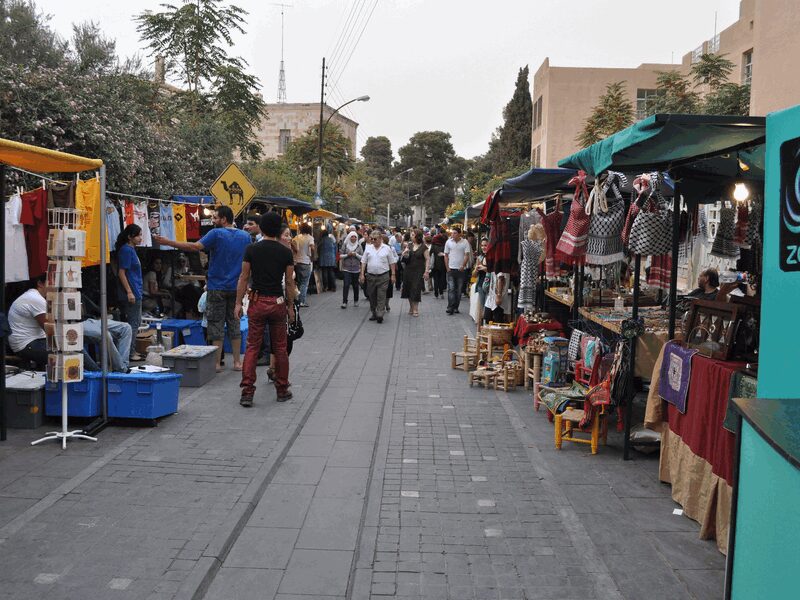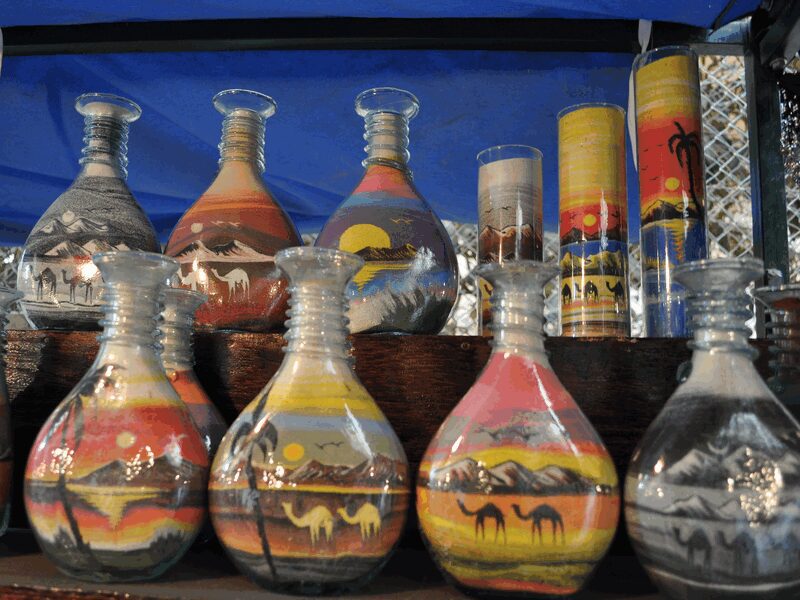
Amman, the capital city of Jordan, beckons with its unique blend of ancient and modern. What can one experience there in a fleeting twenty-four hours?
As the sun rises over the city’s seven hills, the intricate dance of history and culture invites exploration. How do visitors make the most of a day in this vibrant metropolis?
Embarking on a journey through Amman’s winding streets leads to a tapestry of sensory delights, from Roman ruins to culinary feasts. What must-see destinations should crown your itinerary?
Discover Ancient History

Begin your day at the Citadel, perched on the highest hill in Amman. This historic site offers panoramic views and a profound sense of the past, with artefacts and structures dating back to the Neolithic period. The Temple of Hercules and the Umayyad Palace are quintessential landmarks showcasing the city’s layered heritage, from Roman prowess to Islamic grandeur.
Venture next to the Roman Theater, an architectural marvel nestled within the city center. This 2nd-century amphitheater, seating around 6,000 spectators, is a testament to the ambitious urban planning of Ancient Rome and stands as a majestic relic of bygone civilizations against the backdrop of modern Amman.
The Amman Citadel: A Time Capsule

The Citadel of Amman stands as a living mosaic of human history, an emblem of civilizations that have left their indelible mark. Its artefacts and ruins narrate tales from a tapestry of eras, revealing insights into the human journey across millennia.
With relics spanning from the Bronze Age to the Islamic era, the Citadel acts as an all-encompassing archive of human endeavor and adaptation. A walk through its grounds is akin to a dialogue with the ancients, a chance to contemplate the flow of time and the passages of empires.
The Umayyad Palace’s grand dome collapsed during an earthquake in the 8th century.
A visit to the Citadel provides tactile encounters with history—feel the weathered stones of the Roman Temple of Hercules, gaze upon the remnants of the Umayyad Palace, and witness the city of Amman spread out like a historical palimpsest below. It’s an essential pilgrimage for those seeking to connect with Jordan’s multifaceted heritage.
Roman Theatre: Steps into the Past

Behold the Roman Theatre, a majestic relic that echoes the grandeur of ancient Philadelphia, the Hellenistic name for Amman.
Built into the hillside, this amphitheatre is a monumental testament to Roman architectural genius and urban planning. Seating up to 6,000 spectators, its magnificently preserved edifice offers a glimpse into the cultural life of antiquity, hosting performances that ranged from dramatic tragedies to gladiatorial contests under the Mediterranean sun.
Ingeniously designed, the theatre’s acoustics permit even the subtlest of sounds to be heard at the summit, a feature that awes modern visitors. Ensconced within the heart of the city, this site remains a venue for events, gracefully bridging millennia and inviting contemporary audiences to partake in a legacy of entertainment.
The experience of sitting in the stone tiers, where countless individuals once gathered, connects one with a narrative larger than life. Imagine the ancient crowds that convened here, the collective emotions that once resonated through these very stands, and the historical layers that encapsulate the Roman influence in the region. Visiting this iconic structure is not merely a stroll through aged ruins but an encounter with the vibrancy of Jordan’s historical continuum.
Cultural Immersion at Rainbow Street

Rainbow Street, a cobblestoned promenade, pulsates with Amman’s contemporary cultural heartbeat, framing an experiential mosaic for every visitor.
An eclectic mix of traditional cafes, avant-garde galleries, and vibrant bazaars proffers an invitation to immerse in a synesthetic exploration, blending tastes, sounds, and visuals into a rich cultural tapestry.
Here, the aroma of cardamom-laced coffee mingles with the chatter of locals, handicrafts exhibit artisans’ dexterity, and folklore imbues the thoroughfare with Jordanian soul.
Souvenir Shopping Spree

In the bustling veins of Amman’s markets, souvenir hunters can unearth treasures of cultural significance.
The renowned Al-Bukhariya Souk serves as a cornucopia of traditional Jordanian items, where intricately embroidered clothing, aromatic spices, and exquisite hand-painted ceramics captivate the senses. Here, visitors are invited to barter for handcrafted heirlooms that echo the country’s artistic heritage. From vividly colored textiles to ornate silver jewelry, each piece tells a story of Jordan’s rich cultural history. Such acquisitions not only serve as mementos but also support the local artisans who preserve these ancient crafts.
Navigating through the labyrinth of stalls reveals a sensory adventure of textures and hues. Shimmering glass lamps and finely woven rugs compete for attention, while the sound of hammer meeting metal resonates from the workshops of master silversmiths. These markets not only offer objects of beauty but also provide a window into the daily lives and traditions of the Jordanian people.
Moreover, the quest for souvenirs extends beyond mere acquisition. Engaging with the local merchants, often tea in hand, becomes part of the narrative that buyers take home. Such interactions may lead to the discovery of customized offerings, such as tailor-made Bedouin-style garments or personalized calligraphy artworks. These unique experiences and treasures serve to deepen the connection between traveler and destination, forging memories that endure long after the journey concludes.
Taste Traditional Jordanian Cuisine
Embarking on a gastronomic journey in Amman, you encounter a landscape rich with culinary heritage. Traditional dishes, each a tapestry of spices and flavors, promise an immersive dining experience. From smoky grilled meats to vibrant, herb-infused stews, the capital’s food scene captures the spirit of Jordanian hospitality.

Mansaf, the national dish, is an essential taste of Jordan. Lamb, cooked in a sauce of fermented dried yogurt, is served atop a bed of fragrant rice.
Mezze, an array of small dishes, set the stage for a communal meal. Featuring hummus (chickpea dip), baba ghanoush (eggplant dip), and tabbouleh (parsley salad), these starters are a must-have.
Experience the comfort of lentil soup, often enhanced with lemon juice and aromatic herbs, a classic appetizer that soothes and satisfies.
Savor maqluba, an upside-down dish made with rice, vegetables, and chicken or lamb, renown for its intricate layering and rich flavors that tell a story of the region’s agrarian roots and cultural exchanges.
No meal is complete without knafeh, a sweet cheese pastry soaked in sugar syrup, exemplifying the indulgent side of Jordanian cuisine. This dessert contrasts textures, combining a crispy vermicelli surface with a gooey interior, harmoniously capturing the essence of Middle Eastern sweets.
Ultimately, one cannot leave Amman without exploring Jordan’s liquid gem: Arabic coffee. With cardamom-infused aroma and a robust flavor, it becomes not just a beverage, but a cultural experience, inviting one into the timeless ritual of Jordanian hospitality.
Artistic Exploration
In the heart of Amman, the Jabal Al-Weibdeh district emerges as a canvas for contemporary arts and culture. Interspersed among the area’s traditional architecture are galleries like Darat al Funun and The Jordan National Gallery of Fine Arts, offering a visual feast of Middle Eastern and international artistry. Engage with thought-provoking exhibitions and installations, which often reflect the socio-political landscape and the rich tapestry of cultural narratives. This neighborhood is an epicenter for creativity, resonating with the pulse of Amman’s burgeoning art scene and serving as a testament to the city’s thriving cultural identity.
Jordan National Gallery of Fine Arts
The Jordan National Gallery of Fine Arts stands as a prestigious institution, housing a significant collection of contemporary artwork from across the Middle East and the Islamic world, fostering a dialogue of visual cultures.
It is a hub for artistic innovation and representation.
With over 2,800 works from more than 1,000 artists, the gallery presents a vast array of artistic expressions that span various mediums, styles, and epochs, offering visitors an immersive exploratory journey through the art of the region.
The gallery’s dynamic exhibition program, enhanced by workshops, lectures, and cultural events, serves as an educational platform, promoting appreciation of the arts and encouraging public engagement. As such, it plays a pivotal role in nurturing artistic talent and elevating regional art discourse, making it an essential stop for aficionados and curious minds alike.
Street Art and Local Galleries

Delve into Amman’s burgeoning street art scene, a vibrant canvas of socio-political narratives and creative expressions.
- Jabal Al Weibdeh – A district pulsating with murals and installations.
- Rainbow Street – Offers an eclectic mix of graffiti and street performances.
- Manara Arts & Culture – A hub for contemporary art exhibitions and workshops.
Local galleries offer a window into the soul of Jordanian and regional artistry.
Spend time discussing art with local creatives to gain nuanced insight into Amman’s cultural heartbeat.
Sunset at King Abdullah Mosque

As the sun begins its descent, the silhouette of the King Abdullah Mosque against the dimming sky paints a picture of serenity and reflection. This blue-domed architectural marvel, accommodating over 7,000 worshipers, transforms as the golden hour bestows a warm glow upon its facade, and the call to prayer resonates, adding a layer of cultural immersion. Observing the sunset from this vantage point is not just visually arresting, but also spiritually uplifting, offering a moment to contemplate amidst the bustling city life. Whether viewed from afar or within its welcoming courtyard, the experience unites both the faithful and curious travelers in the shared beauty of a day’s peaceful end.
Understanding Islamic Architecture

Islamic architecture is an expression of devotion and identity, shaping the skyline of Amman with its distinctive minarets and domes.
Notably, the discipline of Islamic architecture is recognized for its emphasis on intricate geometric patterns, arabesques, and calligraphy, which reflect the cultural and religious influences of Islam. Absent of human and animal representation due to the aniconic tradition, these decorative elements create a sense of enchantment and reverence, captivating both the observer and the faithful.
Further, Islamic buildings often incorporate features designed for communal gatherings and religious rites. The courtyards, for example, facilitate the flow of worshipers and provide a tranquil space for reflection away from the hustle of daily life, an architectural embodiment of spiritual respite.
With that understanding, visitors to Islamic sites are encouraged to appreciate these structures beyond their aesthetic allure, recognizing the sophisticated principles of design that harmonize functionality with spirituality. This architectural finesse contributes to the serenity of sacred spaces, integrating seamlessly with the tapestry of urban landscapes and offering a glimpse into a rich cultural and spiritual heritage.
Panoramic Views of Amman

Amman’s dynamic topography offers several vantage points for breathtaking cityscapes.
- The Citadel sits atop the highest hill in Amman, providing a historical panorama intertwined with modern urban sprawl.
- Jabal Amman, specifically at the famous Rainbow Street, offers a fusion of natural and urban vistas, particularly enchanting during sunset.
- The Amman Rotana Hotel’s Sky Lounge allows for a luxurious, elevated perspective over the city, complete with the comforts of modern amenities.
Observing from these heights, one appreciates Amman’s blend of ancient and contemporary architectures.
Each viewpoint reveals a unique narrative of Amman, showcasing its layered history and rapid modern development.








